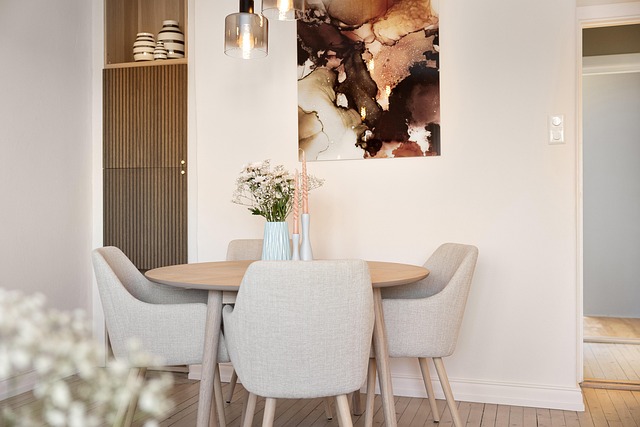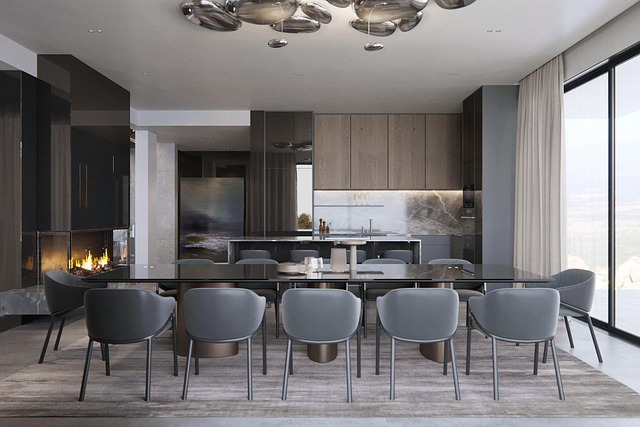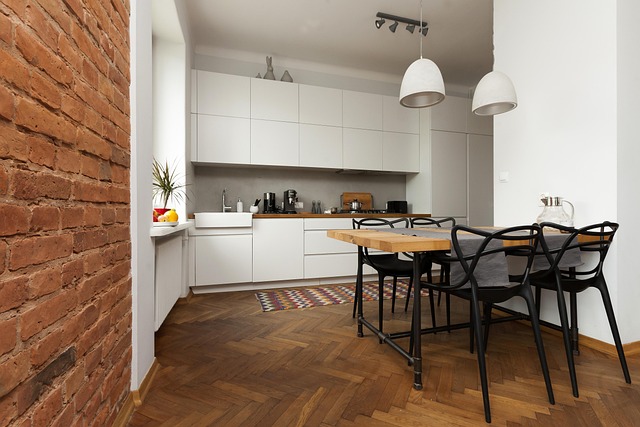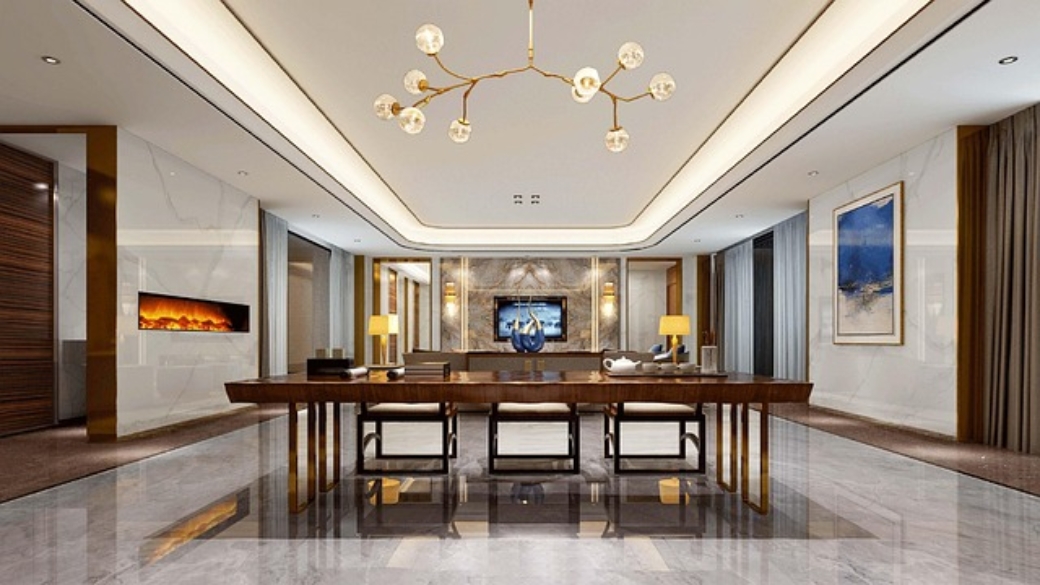Ready to transform your dining space? Discover smart dining room wall design ideas with the right wall panels today!
When it comes to the modern home, the dining room is no longer just a place to eat—it’s a setting for connection, mood, and design impact. If you’re looking to upgrade your dining area, focusing on dining room wall design with high-impact wall panels is one of the fastest ways to deliver elegance, texture, and personality. At Panneli, we see walls as more than just structural elements—they are opportunities for expression, evolution, and identity. With the right wall panels, your dining room can become a standout space, not only functional but beautifully styled.
In this blog post, we’ll explore 5 modern wall panel styles that elevate your dining room wall design. Each option brings its own vibe, materials, installation considerations, and design tips, so you can select the ideal look for your space and budget.
1. Fluted & Ribbed Wall Panels
The fluted or ribbed wall panels trend has surged in recent years, and for good reason: they add texture, subtle shadow play, and vertical rhythm to your dining room wall design. The ridged surface creates movement and dimension without overwhelming the space.
Why choose fluted wall panels for dining room wall design?
- They give height: the vertical lines draw the eye upward, making the dining space feel taller and more open.
- They add subtle texture: unlike busy wallpaper, they maintain a modern and clean aesthetic.
- They reflect light interestingly: depending on room lighting, the ridges create soft shadows that shift through the day.
- They work with minimal décor: when your table and chairs are strong design elements, the wall remains complementary yet impactful.
Material & installation considerations
- Choose panels made of MDF or engineered wood with a fluted profile—these balance cost and finish.
- Ensure proper installation: secure the panels to battens or studs for even alignment and avoid warping.
- Consider color tone: light neutrals for brightness, or deep hues (charcoal, navy) for a more dramatic dining room wall design.
- Seal and finish: MDF fluted panels should be primed/painted or finished with veneer to match your décor.
Design tip for dining room wall design
Mount a fluted panel wall behind the dining table (on the main wall) for a strong focal point. Use a contrasting light fixture to pick up the vertical rhythm. Keep other walls simpler to let the texture dominate.
2. Wood-Effect Slab Wall Panels

Wood-effect wall panels bring warmth, natural texture, and timeless appeal to dining room wall design. These panels replicate the look of real timber without the full cost or maintenance of solid wood.
Why wood-effect panels elevate dining room wall design
- They restore warmth: dining rooms benefit from cozy, inviting surfaces; wood-effect delivers that.
- They create continuity: a panel behind the dining table can tie in with your floor, furniture, or ceiling beams.
- They offer sustainability: many modern wood panels use engineered substrates and eco-friendly finishes.
They integrate with lighting: directional lighting casts natural grain shadows, enriching the wall surface.
Material & installation considerations
- Choose panels with real wood veneer or high-quality laminate for authenticity.
- Decide between full-height panels or a lower panel wainscoting height (with a accent line).
- Ensure moisture resistance: dining rooms sometimes face humidity (from cooking, dishwashers), so select panels rated for that environment.
- Finish carefully: wood-effect panels may require a protective clear coat if they’re in an active family setting.
Design tip for dining room wall design
Position wood-effect wall panels on a long lateral wall, and pair with minimalist furniture (metal chairs, glass table) for contrast. Then add a large abstract art piece or subtle mirror to reflect the texture.
3. Stone / Marble-Look Wall Panels
For a bold, luxurious version of dining room wall design, stone or marble‐look wall panels deliver strong visual impact—without the cost or weight of real stone.
Why stone-look panels work in dining rooms
- They create drama: a marble or veined stone panel immediately frames your dining area as premium.
- They suit modern minimalism: large slabs with subtle veining provide a sleek backdrop for minimalist furniture.
- Maintenance is easier: engineered stone panels or high-pressure laminates give the look of marble but are easier to follow.
- They work with lighting: built-in back-lighting or accent lighting can enhance the veining in stone panels, elevating your dining room wall design.
Material & installation considerations
- Choose lightweight stone panels engineered for wall use—this reduces structural load and installation cost.
- Edge details matter: aim for flush joints to maintain the continuous stone effect.
- Coordinate with flooring/ceiling: perhaps use complementary tones or subtly match the veining.
- Consider acoustics: stone surfaces reflect sound—so use the panel on one main wall and balance with softer surfaces elsewhere.
Design tip for dining room wall design
Apply a full-height stone‐look panel behind a sideboard or buffet wall in the dining room. Keep the dining table simple (white marble top, slim legs) and allow the wall panel to set the tone. Use warm LED lighting underneath a valance to highlight the panel.
4. Metal & Industrial-Finish Wall Panels
For the dining room that leans toward urban-industrial or minimal-modern, metal or metallic-finish wall panels add edge and sophistication to the wall design.
Why metal or metallic panels advance dining room wall design
- They reflect and amplify light: finishes like brushed copper, bronze, or stainless steel add luxe shine.
- They create contrast: in a room of soft fabrics and wood furniture, a metal panel wall becomes a standout feature.
- They align with modern architecture: loft-style, open-plan dining rooms benefit from metallic finishes on wall panels.
- They serve as conversation pieces: a metallic accent wall behind the dining table can anchor the room and become a focal point.
Material & installation considerations
- Choose panels with lightweight aluminium or steel skins—this avoids expensive structural requirements.
- Finishes: brushed, oxidised, patinated, or raw—select based on your décor (warm vs cool metal tone).
- Combine with hidden lighting: uplights or hidden LED strips behind the panel can emphasise texture and finish.
- Consider expansion/gap detail: metal expands and contracts, so proper spacing at joins is needed for installation.
Design tip for dining room wall design
Create an accent wall with metal finish panels on the wall behind the dining table. Pair with a pendant light in a matching metal tone, minimalist chairs (no upholstery), and keep other walls matte and muted so the metal wall panels shine.
5. Fabric / Acoustic Wall Panels
Dining rooms are often overlooked when it comes to acoustics—between conversations, clinking glassware, and laughter the sound can bounce. Fabric or acoustic wall panels help with both design and function in your dining room wall design.
Why acoustic/fabric panels enhance dining room wall design
- They reduce echo and reverberation: better sound comfort means more enjoyable dining gatherings.
- They add textural richness: fabric panels bring softness and visual depth compared with hard surfaces.
- They enable colour and pattern variation: you can integrate subtle patterns or hues that tie with upholstery or decorative elements.
- They blend style and comfort: a dining room that is acoustically soft feels more premium and welcoming.
Material & installation considerations
- Choose panels with Class A sound-absorption rating if you’re using them for acoustic performance.
- Select fire-rated fabric finishes if the dining area is part of a commercial or rental setting.
- Mount the panels behind the wall finish or as surface-mounted—depending on budget and schedule.
- Consider modular installation: you might cover only the lower half of the wall with fabric panels, and leave the upper half plain for art or lighting.
Design tip for dining room wall design
Use fabric wall panels on the side walls of the dining room (opposite windows) to soften the space. Choose panels that match the dining chair fabric or curtain tone, giving cohesion. Then use a bold accent panel behind the table (perhaps in a metallic or stone finish) for contrast.
Making the Right Choice: How to Pick Your Wall Panels for Dining Room Wall Design

To deliver the best dining room wall design using wall panels, follow this decision-roadmap:
Step 1: Define your goal
- Do you want warmth? → go wood-effect.
- Do you want drama and luxury? → stone/marble-look.
- Do you want texture and verticality? → fluted/ribbed.
- Do you want a modern edge and shine? → metal/industrial.
- Do you want comfort and acoustics? → fabric/acoustic.
Step 2: Assess your environment
- Wall size: A long uninterrupted wall gives best visual impact; smaller alcoves may benefit from lighter materials.
- Lighting: Natural & artificial light will affect how the panel finish looks—shiny metals reflect a lot; textured woods may absorb.
- Acoustics: If you host large gatherings, consider acoustic panels to minimize echo.
- Usage: High traffic dining rooms (kids, entertaining) may require panels that are durable and low-maintenance.
Step 3: Budget & installation
- Wood or fluted MDF tends to cost less than engineered stone or full metal panels.
- Determine surface preparation: uneven walls may need sub-battens or extra finishing before panel installation.
- Factor in lighting, electrical work (for LED strips), and specialist installation if required.
- Maintenance: Stone-look and metal panels can be easier to clean; fabric panels require care.
Step 4: Coordinate with furniture & finishes
- Match the wall panel tone and texture with your dining table surface, chairs, flooring, and pendant lighting.
- Use the wall panel as a feature wall, and keep surrounding walls simpler (paint or plaster) so the panel stands out.
- If you go bold on the wall panels, keep décor minimal; if your furniture is bold, choose more subdued panel finishes.
Step 5: Request samples and mock up
At Panneli, customizing and sampling is part of the process. Order sample panels, test them in your dining room lighting, and observe how they interplay with your furniture and room size. Seeing them in situ before full installation prevents regret.
Why Choose Panneli for Your Dining Room Wall Panels?

- Panneli specialises in high-quality, customisable wall panels across styles—wood-effect, stone-look, metal, fluted, acoustic. Panneli+1
- Their philosophy: “We believe that walls serve as the canvas for life, growth, and transformation.” Panneli
- They offer full project support—from concept through installation—making it easier to bring your dining room wall design vision to life without juggling multiple contractors. Panneli
- Durability and style: Their panels combine aesthetic appeal with practical performance (maintenance, longevity) which is crucial in a dining context.
Why Choose Panneli for Your Dining Room Wall Panels?
Panel Style | Best For | Key Benefit | Consideration |
Fluted / Ribbed | Vertical influence, texture | Adds height & movement | Needs careful installation alignment |
Wood-Effect Slab | Warmth, natural feel | Rich texture + timeless appeal | Check for moisture resistance |
Stone / Marble-Look | Luxury, high-impact feature wall | Bold visual statement | Heavier materials, higher cost |
Metal / Industrial | Modern, high-contrast design | Reflective finish, dramatic edge | May reflect more light; acoustics impact |
Fabric / Acoustic Panels | Sound comfort + visual texture | Combines design with improved acoustics | Fabric maintenance; may cost more |
Final Thoughts
Choosing the right wall panels is a powerful lever in your dining room wall design strategy. Rather than settling for plain painted walls, you can make the wall a focal design asset—something that elevates the ambience, complements your furniture, and reinforces style.
Here’s your quick action checklist:
- Pinpoint your desired aesthetic (warm, luxe, textured, modern).
- Measure your dining room wall(s) and check lighting conditions.
- Request samples from Panneli and test in your actual space.
- Decide on budget and scope (one accent wall vs full room coverage).
- Coordinate with your dining table, chairs, flooring and lighting to ensure harmony.
- Plan installation timing—ensure flooring and other elements are settled to avoid re-work.
- Maintain: keep panels clean, protect finishes, and review annual condition if hosting many events.
By following this path, you’ll shift your dining room from functional to remarkable. Remember: a well-designed wall is not just background—it’s a key part of your spatial story.
Ready to bring your dining room wall design to life with premium wall panels? Visit Panneli’s catalog, explore the collections, request your samples, and schedule a consultation. Your next meal will happen in a space that not only functions—but impresses.
Let’s turn that plain dining wall into design forward.



